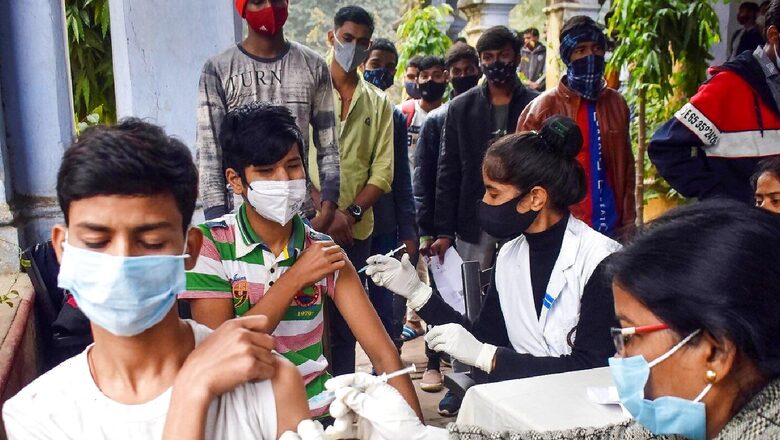
views
As the rest of the nation witnesses an ebb in COVID-19 cases, Kerala has been reporting a Test Positivity Rate (TPR) of over 40 per cent, but far from being defensive over the high figures, state health minister Veena George said Kerala is firmly in control of the situation. Breaking down the seemingly confounding Covid numbers from the region which has hardly ever mirrored the situation across the nation George said several factors, including the highly infectious nature of the latest variant of concern, and deliberate non-imposition of major restrictions like lockdowns, led to the rapid rise in COVID-19 cases.
After dropping below the 50,000 mark for a day, fresh COVID-19 cases in Kerala on Tuesday rose to 51,887 raising the caseload to 60,77,556 in the state. While the state reported 42.86 per cent TPR on Tuesday, Kerala showed an average positivity rate of 45.9 per cent for the last seven days. On January 25, Kerala had registered 55,475 cases, the highest ever single day spike in the infection since the outbreak of the pandemic in 2020. "Various reasons led to the rapid rise in Covid cases. The infectivity of Omicron was high, but we did not impose any major restrictions like a lockdown. As the vaccination rate in the state is high and the severity of the new variant is less, we decided not to rein in the spread this time around. Our strategy is different from the last two waves," George told PTI. One factor, however, has been consistent in the state since the outbreak the relatively low rate of hospitalisation of Covid cases, which is particularly true of the third wave.
"Currently, only three per cent of the total COVID-19 patients in the state are hospitalised. Among that only 0.4 per cent require ICU facilities. Those who are hospitalised are either with comorbidities or the elderly," the journalist-turned-politician said. The minister said the TPR was high these days because the state was strictly adhering to the Purposive Testing Strategy issued by the ICMR. The advisory on purposive testing strategy was issued to ensure early detection of asymptomatic cases as well as detection of infections in the elderly (above 60 years) and individuals with comorbidities for quick isolation and care. With 1,61,386 people testing positive for coronavirus infection in a day, India's total tally of cases increased to over 4.16 crore on Wednesday. The daily positivity rate was recorded at 9.26 per cent, while the weekly positivity rate was 14.15 per cent, according to the health ministry.
George pointed out that tests per million in Kerala was still high when compared to other parts of the country which also reflects on the high number of cases. As many as 1,21,048 samples were tested in the last 24 hours. "We had earlier expected a proportional increase in the number of hospitalisations as the number of infections rose, but that did not happen," George said, adding that the health department expects the rise in cases to come down by mid February.
Significantly, she said that the health department in the state did not halt non-Covid treatment amid the third wave, over 90 per cent of which were Omicron cases. "Our third wave came during the tail end of the second wave. Even though there was a surge in COVID-19 cases, we did not stop the non-covid treatment in the state," she said.
As the number of cases increased in the state, the Left government had earlier decided to impose new mitigation strategy by imposing restrictions at district level on the basis of the number of people admitted to hospitals and authorised the Disaster Management Authority to divide the districts into three groups, A, B and C. In the districts falling under A category, all social, cultural, religious, political and public events and weddings and funerals can be attended by up to 50 people. No such gatherings will be allowed in the B and C category districts. In such areas, religious worship should be conducted online only and a maximum of 20 people will be allowed for weddings and funerals. Movie theaters, swimming pools and gyms are not allowed to function in C category districts.
Kerala Government Medical Officers Association general secretary, Dr T N Suresh, told .
.
Read all the Latest India News here



















Comments
0 comment